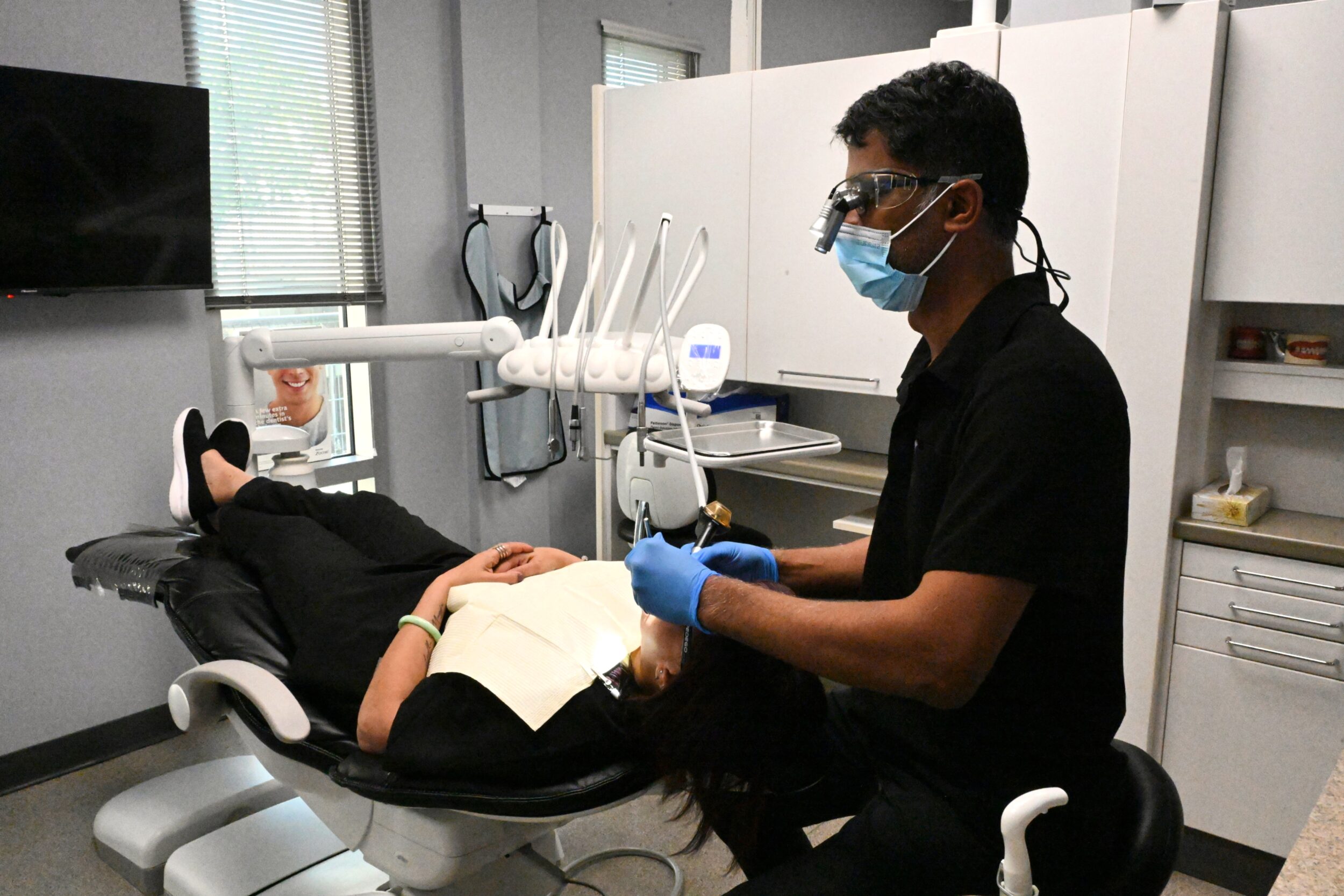What is a Periodontist in Calgary, AB
In dentistry, a periodontist specializes in the soft tissues of the mouth and the jawbone, which supports the teeth. It is necessary for a periodontist to complete three years of training in a periodontology residency program after graduating from an accredited dental school.
This residency program focuses primarily on surgical and nonsurgical management of periodontal disease and the placement of dental implants.

Periodontists treat the following conditions
Periodontists are primarily concerned with preventing gum disease (periodontal disease), diagnosing gum and jawbone conditions, and treating gingivitis, periodontitis and bone loss. The most common cause of tooth loss among adults in developed countries is periodontal disease.
The periodontist is capable of treating mild, moderate and advanced gum disease by addressing the bacterial infection at the root of the problem, providing periodontal treatment, then providing information and education on good oral hygiene and the effective cleaning of the teeth.
Periodontists treat the following conditions most commonly:
- Gingivitis
It is a mild form of inflammation of the gums that may or may not be accompanied by pain and bleeding. - Mild/moderate periodontitis
Whenever the pockets between the teeth and the soft tissues are measured to be between 4-6mm, this is considered to be moderate periodontitis (gum disease). - Advanced periodontitis
Generally, when the pocket between the teeth and the soft tissues exceeds 6mm in depth, significant bone loss may occur, causing the teeth to shift or fall out. - Missing teeth
The periodontist can implant prosthetic teeth when teeth are missing due to bone loss. Located in the jawbone, these artificial teeth restore the functionality of the mouth.
Periodontists provide the following treatments
Periodontists perform a wide range of treatments to prevent the progression of gum disease, replace missing teeth, and improve the aesthetic appearance of the smile.
Periodontists commonly perform the following treatments:
- Implant placement
By anchoring a prosthetic tooth to the jawbone, the periodontist is able to create a natural-looking replacement for missing teeth. - Grafting of bone
It is important to note that dental implants can only be placed when there is sufficient bone on which to attach the prosthetic tooth. In the case of bone loss, bone grafting is an excellent way to add or “grow” bone to secure an implant. - Osteoplasty (hard tissue recontouring)
A periodontist can recontour the hard tissue after treating periodontitis to create a natural-looking and aesthetically pleasing smile. - Gingivoplasty (soft tissue recontouring)
When the gums recede due to periodontitis, the teeth may appear longer, resulting in a “toothy” smile. In order to make the teeth look more even, a periodontist may be able to remove tissues or straighten the gum line. - Crown lengthening
A periodontist can remove some of the gingival tissue around the tooth in order to expose more of the natural tooth. - Cleaning of deep pockets
The pockets between the soft tissues and the teeth become more difficult to clean as gingivitis and periodontitis progress. In order to remove debris and bacteria that can cause infection, the periodontist can scale and root plane the teeth (sometimes under local anesthetic).
Periodontists are dental health professionals who are highly skilled in diagnosing and treating soft tissue and bone disorders in the mouth.
In case of questions or concerns, please do not hesitate to contact your periodontist.